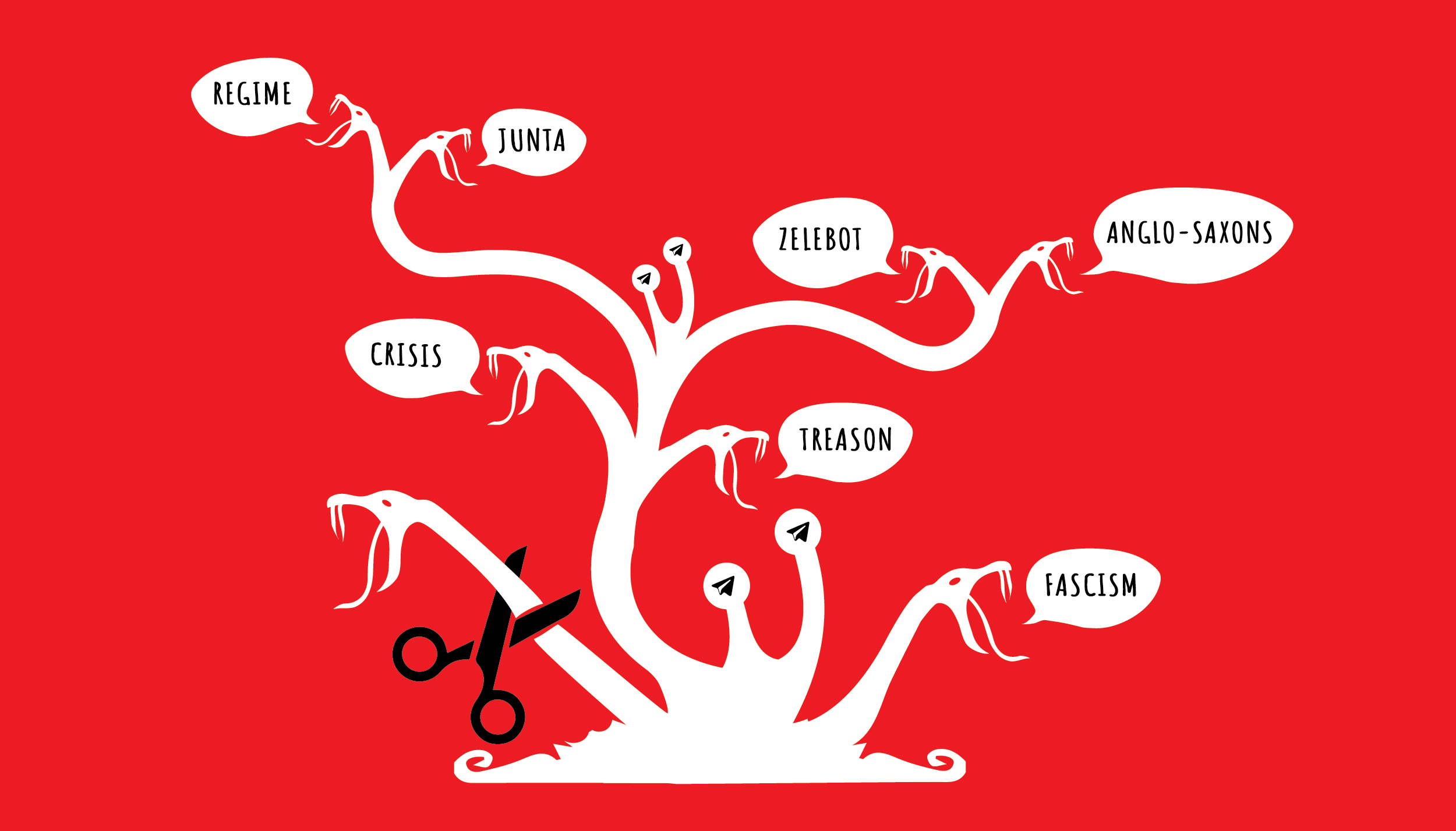Analysts at Detector Media analyze the content of Telegram channels based on the following methodology.
Sources and principles of data processing
Detector Media respects the principles of privacy and security of personal data in social media.
In this regard, it uses only public data that users have allowed to be collected and processed for analysis. Detector Media takes into account the Telegram policy on the methods of obtaining, processing, and storing data and is also guided by the General Data Protection Regulation, the legislation of the European Union on the protection of personal data.
On Telegram, we collect data only from open and public groups.
This study focuses on the Ukrainian segment of Telegram.
By the Ukrainian Telegram segment, we mean Telegram channels that distribute content targeted at the Ukrainian audience, including content aimed at the territories of Ukraine temporarily occupied by Russia. The content of these channels is mainly in Russian.
This study examines pro-Russian and occupation Telegram channels.
By pro-Russian Telegram channels, we mean those targeted at the Ukrainian audience but spread disinformation messages and narratives in line with Russian propaganda.
By occupation Telegram channels, we mean those that are focused on the temporarily occupied territories of Ukraine, in particular, in the name or description of which there is a mention of a specific city or region of Ukraine which has been or is still under occupation since 2014; as well as settlements that Russia plans/planned to capture.
Detector Media refers to pro-Russian Telegram channels as any from the Ukrainian segment of Telegram, the content of which meets one or more of the following criteria (in total):
- Telegram channels, whose connection with Russia has already been proven (we wrote about them earlier);
- Channels that disseminate disinformation messages and content that is in line with Russian propaganda narratives and messages; if more than five Russian propaganda narratives can be found in the content in 2022;
- Those that quote Russian and pro-Russian media, Telegram channels, bloggers, and resources related to Russian special services, politicians, collaborators, and occupation authorities without critical reflection or analysis; if analysts detected five or more such posts among the content of the channel;
- Mimic Ukrainian channels, but the content uses lexical markers typical of Russian propaganda content;
- Disseminate content of channels whose names contain the letters ‘Z’, ‘V’, ‘O’, and other terms from the Russian military glossary (for example, ‘denazification’ or ‘SVO’) without critical reflection or analysis; if analysts detected five or more such posts among the content of the channel.
We define occupation Telegram channels as those that are locally focused on the temporarily occupied territories of Ukraine and meet one or more of the following criteria (in total):
- Mimic official sources of information of the occupation authorities;
- Mimic the local media and spread anti-Ukrainian rhetoric and Russian disinformation narratives;
- Have a military theme and spread anti-Ukrainian and pro-Russian rhetoric;
- Personal channels (user blogs) that disseminate content in line with Russian propaganda messages and narratives;
- channels whose names contain letters ‘Z’, ‘V’, ‘O’, and other terms from the Russian military glossary (for example, ‘denazification’ or ‘SVO’), the use of which may indicate the channel's position on Russia's war against Ukraine.
By disinformation narrative, we mean a consistent set of statements or assessments used to influence public opinion by exaggerating or distorting reality.
In this study, Detector Media focuses on the following:
- Detection of pro-Russian and occupation Telegram channels and their networks;
- Establishing interconnections between them and other channels;
- Tracking the tactics of spreading Russian propaganda and disinformation narratives;
- Analysing changes in the work of pro-Russian channels after the start of the full-scale invasion;
- Studying the impact of the events of the full-scale invasion on the rating, content, and audience of these Telegram channels.
Detector Media understands that it is impossible to determine the motivation of certain journalists, media, or other social media users who distribute content. The authors of the study do not claim that the channels are engaged in deliberate Russian propaganda (except for the occupation ones) but only state that their materials contain messages and content identical or close to the Kremlin’s disinformation narratives.
Types of data that Detector Media uses to analyze Telegram channels:
- General information about Telegram channels (date of creation, number of subscribers and geolocation);
- Texts of posts and comments to them;
- Information about the time of publication of posts and comments;
- Information about the sharing of posts by other Telegram channels and mentions of other Telegram channels.
Lexical markers that indicate pro-Russian content
The list of marker words is based on the content analysis of Russian propaganda Telegram channels and information resources to track similar rhetoric in the Ukrainian segment of Telegram. In particular, Russian propaganda resorts to tactics of equivocation, manipulation, mirroring, etc. These tactics, in particular, involve using certain marker words/expressions. These include labeling, devaluing, offensive language, etc. As a result, people are more likely to subconsciously perceive what is being said. The list of marker words also includes words that indicate manipulation.



